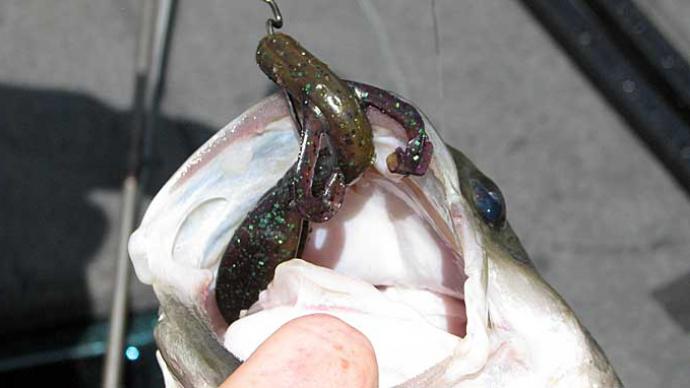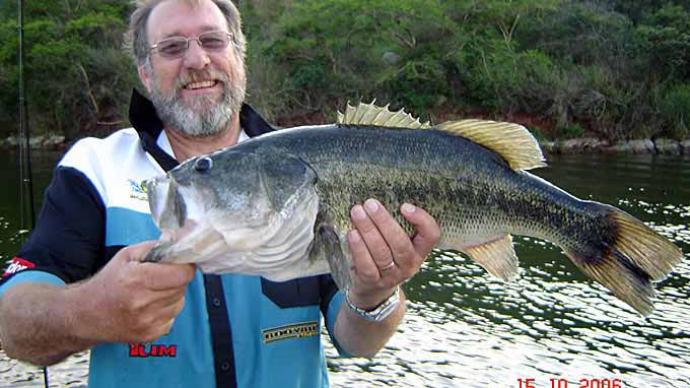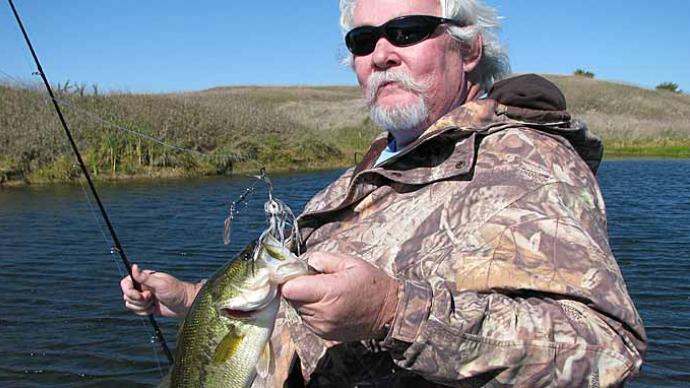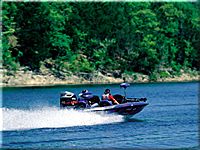
Professional bass anglers on the FLW Tour must determine the answer to this question every time they compete. It would be an easy answer for them if one option worked better than the other, but both bass-fishing strategies have made the pros winners throughout the years
Sometimes the pros switch from one strategy to the other depending on various factors, but for the most part, they rely on the best option suited for their fishing style. Three touring pros who count on the run-and-gun or stay-and-play strategies of competitive fishing are Larry Nixon of Bee Branch, Ark.; Craig Powers of Rockwood, Tenn.; and Rick Lillegard of Atkinson, N.H. They offer the following tips on when and why to cover a lot of water or camp on a few spots.
Staying put
"I prefer area fishing. Running and gunning is fine, and I pattern fish that way when I have to on certain types of lakes," says Nixon, who claims he does better when he can concentrate on one or two areas.
The Arkansas pro determines which strategy he will employ during practice during the tournament. "I hunt for areas where I can spend some time, and if I find fish there, that is definitely where I am going to spend my tournament," he says. "If I can get areas where I can spend two or three hours really picking the area apart and changing lures with the flow, I do better than trying to run and gun with the younger guys."
Various factors influence Nixon's decision on whether to run and gun or saturate an area. If wind makes fishing difficult in his favorite areas, he might abandon his game plan and try to catch scattered fish by covering a lot of water. In muddy-water conditions, Nixon slows down and thoroughly works over specific targets in an area, but in deep, clear lakes, he patterns certain types of structure and runs from one spot to another throughout the day.

Bass numbers in a body of water also affect Nixon's strategy. "If I know a body of water has a lot of bass, area fishing is much better," he says. The fish tend to scatter in waters with a scant bass population, so running and gunning produce better in this situation.
Availability of cover is another crucial factor in Nixon's choice of game plans. "On any lake that has vegetation, you are more apt to find areas with schools of big fish or numbers of fish where you can concentrate on areas better," he advises. "If there is scattered cover, it makes it difficult, so you just have to fish as much of it as you can in a given day."
Concentrating on a few areas was the key to Nixon's success in a recent FLW Tour victory. "I had the fish locked up in two or three areas," Nixon says. "It was different patterns, but the same water depth of 2 ½ to 3 feet deep." Earlier in the week, Nixon caught smallmouth on tube baits along the bottom, but when the fishing pressure decreased, and the wind calmed down in the final round, he worked the same areas with topwater lures and soft plastic jerkbaits to catch his winning stringer.
Area Milk Runs
Rick Lillegard also prefers fishing areas rather than running patterns throughout a fishery. "I just have more confidence knowing the fish are there and have more confidence in being able to change within that one area and still be able to locate the fish," he says. "I try not to camp in one, though, and throw all my eggs into one spot. I like to have three, four, or up to five areas depending on the situations on the lakes or if multiple species are there."

The lakes in his region cause Lillegard to key on more than one area to catch different species of bass. "Largemouth are notorious for going shallow in the afternoon on the clear-water natural lakes," he says. "So in the morning, I might try one area when the smallmouth are more active on topwater, and then in the heat of the day, if I've got my limit, I can try to get that kicker largemouth by fishing docks or somewhere that might put the fish in an ambush position."
The New Hampshire angler keys on overlooked spots in small areas, such as submerged rock piles or a downed tree in the middle of a weed bed that might hold two or three bass. "Then I can make a milk run and hit those spots at two or three different times of the day and catch fish each time I go there," he says.
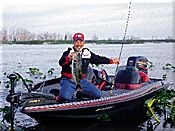
While working a spot, Lillegard tries three or four lures to determine the fish's mood. He opts for spinnerbaits and crankbaits to trigger reaction strikes from aggressive bass, or he picks jigs and tubes for lethargic bass. Soft plastic and floating jerkbaits are other lures Lillegard selects for saturating an area.
During a tournament on Sam Rayburn Reservoir in Texas, Lillegard used his milk run strategy to finish 20th. Keying on the Buck Bay area, Lillegard spent each day running to three or four secondary points. Lillegard rotated lures on each point, trying a red Cotton Cordell Rattlin' Spot along the inside weed lines of the point and flipping a Riverside Lures Vibra King Tube in the flooded buck bushes.
Fishing pressure sometimes forces Lillegard to stay in one spot, especially on lakes with well-known areas attracting many anglers. "I just kind of concentrate on what I am doing and try not to worry about them and get in their way," says Lillegard, who tries to find an area productive enough to prevent him from overlapping with the crowds. "You've got to determine if you can win or make money in the tournament from just one spot."
Running and Gunning
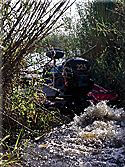
Craig Powers won a tournament on Louisiana's Red River by keying on an area, but most of the time, the Tennessee pro prefers running and gunning. "It just fits my style better," he says. "If I'm fishing shallow water and not getting bit, I know they are biting somewhere else." He believes covering a lot of water is also conducive to the types of lures he prefers to throw (jigs, shallow-running crankbaits, and topwater lures).
The seasons play a crucial role in Powers' strategy options. He prefers covering a lot of water throughout the spring spawning cycle and switching to fishing-specific areas in the summer. "Pre-spawn fish are just moving up and down to feed and trying to get ready to move in on the beds," says Powers, who moves every 20 minutes if a spot fails to produce.
Hopping around also produces for Powers during the spawn. "If you are staying in one spot, then you better be fishing for a 5-pounder or bigger fish, or it's a waste of time," he warns.
The touring pro rates the post-spawn as the best time for running and gunning. "The fish have come off the nest, so the more areas you can hit, the better chance you've got to get bit because those fish are moving to the first available structure," he suggests.
Powers keys on the areas when the fish migrate to their deep summertime haunts because he knows these spots hold schools of bass. "If you find one fish, you've found the school," he says.
In the fall, Powers employs a run-and-gun strategy of following migrating baitfish. "If you find the baitfish, then I promise you the bass are somewhere," he says. His run-and-gun tactics differ some this time of year, though. Rather than making ten casts along a spot and then leaving, Powers pulls into the back of a pocket or creek and saturates the entire area with multiple presentations. He throws Bomber Square A crankbaits, spinnerbaits, and topwater lures before moving to the back of another spot.
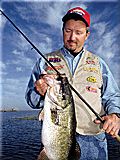
The run-and-gun strategy works best for Powers in specific water and weather conditions. When early spring rains flood the banks and create miles of new bass hideouts, Powers resorts to flipping so he can quickly cover a lot of territory. On windy and rainy days during the pre-spawn, Powers takes advantage of the situation by tying on a large spinnerbait and hitting as many wind-blown points as he can throughout the day.
While Nixon prefers spending his day in one or two areas, he successfully employed the opposite strategy. "The thing that separates running and gunning from area fishing is the body of water more than anything else," he notes. "Sometimes fish just aren't schooled up well, and you might get a pattern where you catch one or two off of rocks. Then you have to find more rocks and catch another."
Nixon relied on such a rock pattern during an FLW Tour event at Lake Murray. The competitors faced adverse conditions as the weather was cold and the water temperature ranged in the upper 40s to low 50s, Nixon still managed to catch pre-spawn bass on Carolina-rigged finesse worms. "I figured out the fish were within 50 to 100 yards of some kind of a point, so I keyed in on certain types of points with rocks," says Nixon, whose point-running strategy paid off in a third-place finish.
Running and gunning also give an advantage to anglers needing a kicker fish. "A lot of times, big fish are loners, and they tend to select a precise type of cover," Nixon says. "So a guy who moves around a lot and hunts that precise cover is going to catch bigger fish many times."
Run a pattern or fish an area? Since both strategies work in tournaments, personal preference and circumstances determine whether the pros stay or go.
Content provided by Bass Fishing Magazine, the official publication of FLW Outdoors
Copyright John Neporadny, Jr. All Rights Reserved


